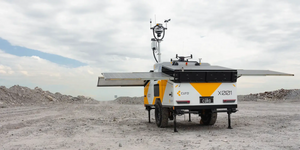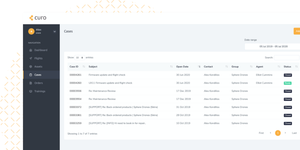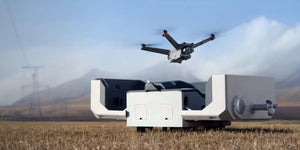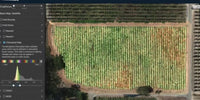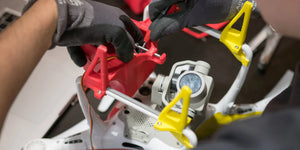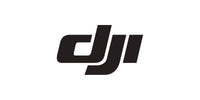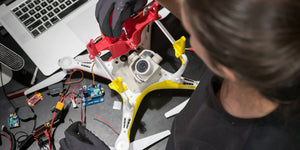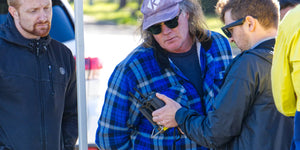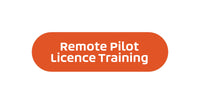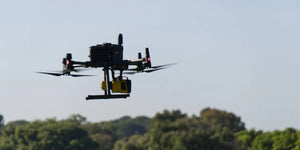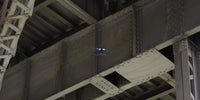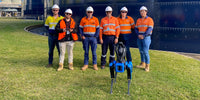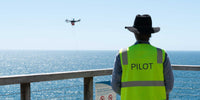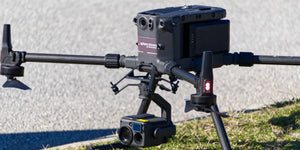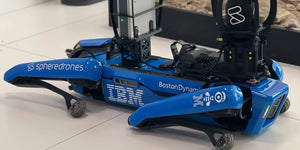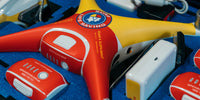The global demand for high-quality aerial data capture is simply staggering. What’s driving this increasing demand is the availability of tools that not only make this job easy and cost effective, but more time-efficient and precise than ever before.
We are, of course, talking about drone technology.
Today, drones are helping organisations map large areas and provide instant and precise data to help expedite workflows in a wide and varied range of commercial applications.
Indeed, only a few years ago, the only way to get an aerial map of high-accuracy and resolution was to fly the area with a manned aircraft—or have access to a satellite! Since the rapid advancements in drones and their accompanying payloads, as well as their decreasing costs, high-quality aerial mapping has become available to a multitude of people and industries.
So what is aerial mapping?
In simple terms, aerial mapping is carried out via a technique called photogrammetry. This is essentially the science of making measurements from photographs. The output of this is normally a map, measurement or 3D model of a real-world object or scene.
Now, being able to map with drones as opposed to manned aircraft means much higher-quality imagery and data at a much lower cost as drones can fly lower, slower and with much greater flexibility than large aircraft.
So what outcomes make a great mapping drone?
Mapping with drone technology really needs to meet four key criteria.
- Efficiency
Mapping drones need to be able to fly and capture data over your intended target area quickly and efficiently. While this may sound obvious, it is the selection of the right equipment for the application that will determine this.
- Accuracy
For commercial applications, the drone mapping ‘system’ you use combined with the data it collects and processes must be at a level that meets civil and surveying accuracy specifications.
- Economical
The time your drone is in the field and the time it takes to secure and process data will, of course, be directly linked to the economy (or cost) of your project. Again, equipment selection for the application will be central to success.
- Easy
Sounds obvious, however, the complete workflow from data capture to data processing and deliverable results must be seamless. It is generally the case the more sophisticated and carefully considered your drone technology, the easier the process becomes.
Let’s look at some mapping drones
There are many drone choices for just as many commercial applications. The challenge is aligning your application to the right drone technology. This is not as easy as it may appear! So before we list drone mapping options, we always recommend you speak to a commercial drone expert that can help guide, advise and indeed, develop a solution for your mapping application.This noted, here is our selection of some mapping drones at escalating price and ability.
A small, agile and cost-effective mapping drone that is easy to set up and fly and with solid design and data collection attributes. It doesn’t have the range and scope of larger and more sophisticated options – for example, it requires five flights to map 100 hectares and requires many surveyed and targeted Ground Control Points (GCPs) to maximise mapping accuracy. These things noted, it is a high-functioning drone with a mapping accuracy of 75-250mm. Overall, well suited to smaller, less detail essential applications.
DJI Matrice 210 with Zenmuse camera
A very hand mapping package. The DJI Matrice 210 is a step-up from the Phantom and is for applications that need a robust, expandable and feature-rich mapping package. In comparison to the Phantom, it can map 100 hectares in four flights and while it still requires GCPs, it doesn’t need as many – only 12 for this area. It offers some nice features such as obstacle avoidance technology and easy ‘snap’ fold up and down for portability. More importantly, it is compatible with the professional, high-resolution camera range – Zenmuse – which offers compact Super 35 options with integrated gimbal (mount). With a mapping accuracy of 50-75mm it is, overall, a professional mapping package that is well suited to small to medium mapping applications with greater data accuracy requirements.
Moving up the mapping range, the Delair UX11 PPK is a globally recognised mapping drone package. A fixed-wing drone (as opposed to a quadcopter), it offers easy field operation via its ‘hand-launch’ ability, has a one hour flight time and precision ‘deep stall’ landing technology. This means it can undertake mapping in almost any environment easily, safely and effectively. While still requiring some GCPs – only three or four per 100 hectares – it saves a great deal of set up time and only needs minimal survey ground control.
What also sets it apart from the Phantom and Matrice, is its on-board data processing, embedded Post Processed Kinematic (PPK) technology, (a GPS correction technology technique that works to correct location data), and a purpose-designed mapping camera. It can also operate Beyond Visual Line Of Site (BVLOS) and with its 3G/4G telemetry, it has important redundancy features and communication confidence.
With a mapping accuracy of 30-50mm, it is a serious and professional mapping package that makes the entire mapping workflow easy, accurate and autonomous. Ideally suited to medium to large mapping applications where detailed data is essential.
A high-end Delair mapping option, the DT18-HD is a professional fixed-wing, best-in-class mapping drone package.
Its operating system includes embedded PPK and DG (Direct Georeferencing) which, in simple terms, is a highly efficient method for connecting aerial images to their geographic positioning on the earth’s surface. As a result, it requires only a single GCP for a 100 hectare mapping project dramatically improving data accuracy and reducing field set-up time.
It’s carries a high-end metric camera which has a low distortion metric lens and reliable construction to maintain its calibration and an exchange payload with the Micasense Red-edge M for NDVI data.
With the ‘Baby-Bear’ option, it is certified for BVLOS for up to a remarkable 6km.
Overall, a truly professional mapping package with a 20-30mm mapping accuracy that ensures a fast and seamless workflow from drone through to analytics.
Want to learn more about drone mapping?
If you are new to drone technology or simply want to learn more, we highly recommend you speak to a drone specialist that can advise you on both drone options and the best approach to their commercial use in mapping applications.
Sphere Drones is arguably Australia’s leading source of expertise on commercial drone technology solutions in Australia.
Their Sydney-based operation is a state-of-the-art solutions development facility with some of the drone industry’s leading personnel – making it (or their website) a logical first step to learn more about or identify a solution for your commercial needs.
